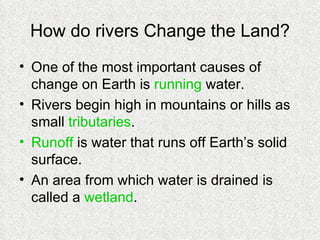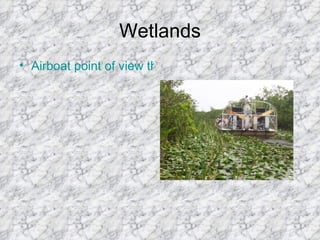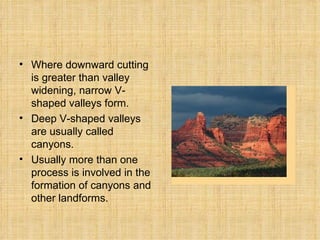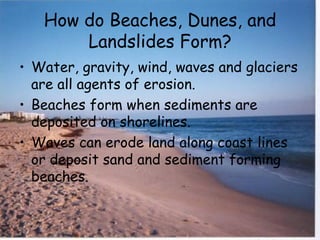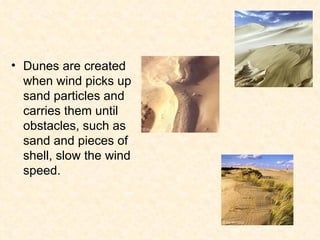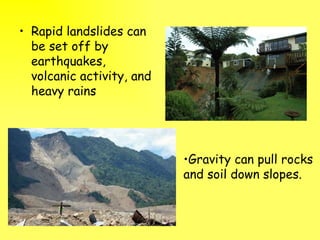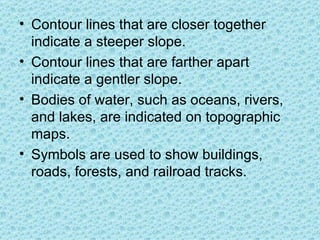Rivers shape the land by eroding and depositing sediments over time. They cut valleys and canyons, form floodplains and deltas at their mouths. Running water is one of the most important forces changing Earth's surface. The land is made up of layers - the lithosphere is the outer rocky layer, the hydrosphere contains Earth's water, and the atmosphere is the blanket of gases. Together these systems continuously shape and resurface the planet.


